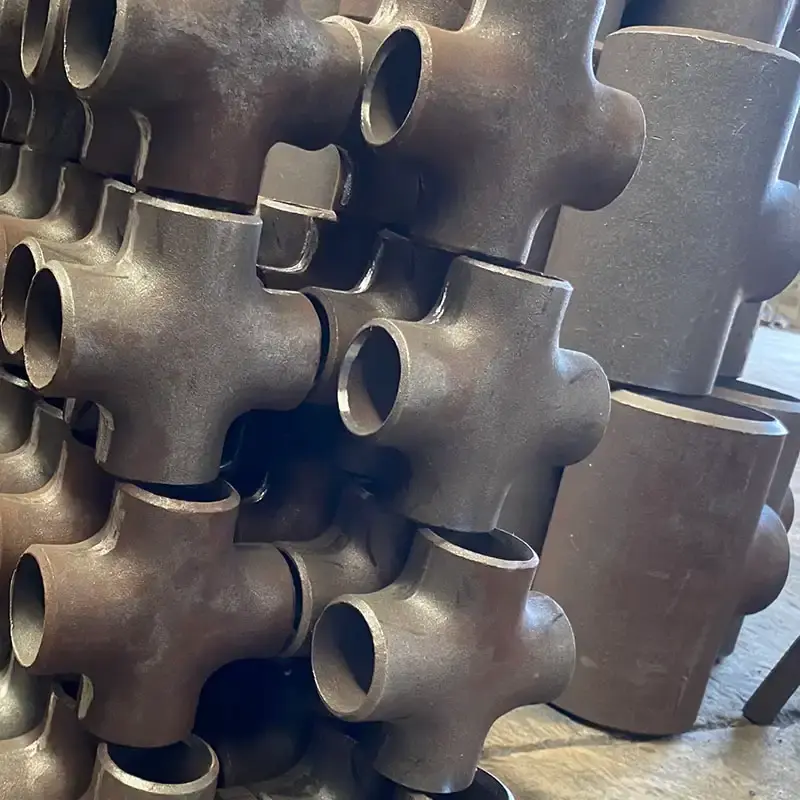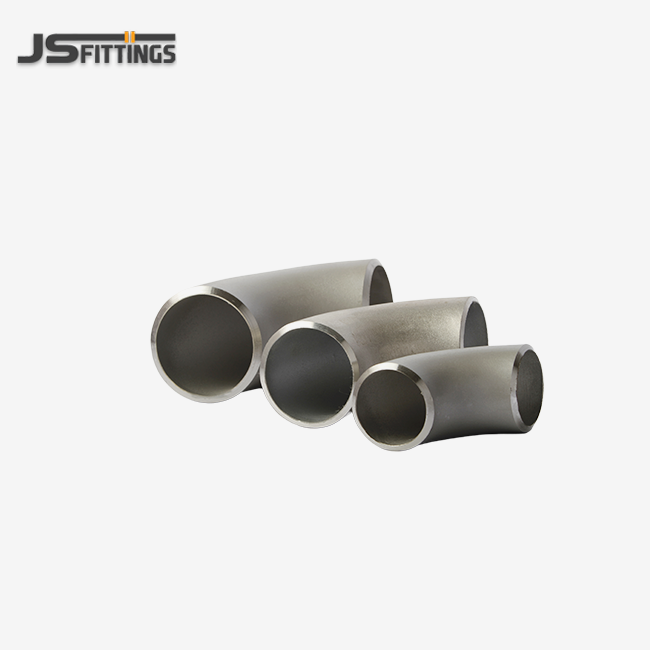What makes butt weld connections superior for industrial piping systems?
Butt weld joints are very strong and reliable, which makes them stand out in industrial pipe systems. Butt welds, unlike mechanical joints or threaded connections, make a pipe structure that is continuous and smooth. This spreads stress evenly across the whole joint. This even spread of stress makes breakdown places much less likely, which improves the general stability of the pipe system.
Enhanced Structural Integrity
Butt welding is the process of joining the ends of two pipes or fittings together so that the joint is as strong as the base material. This makes a link that can stand up to high temps, pressures, and outside forces without letting the system's stability slip. Not having any extra parts like flanges or seals further gets rid of possible weak spots and lowers the risk of leaks.
Versatility in Material and Size
Not only can butt weld joints be used on steel, but they can also be used on alloys, carbon steel, and more. In the industrial world, they can be used in many places, such as high-temperature steam systems and poisons that are rough on metal. Butt welds can also connect pipes and parts of different sizes, from small tubing to big pipes with a lot of holes in them. In this way, the system can be built and grow in more ways.
Long-term Cost-effectiveness
Butt weld steel pipe cross joints may need skilled workers and special tools to be set up the first time, but the long-term benefits usually beat the costs. Butt-welded steel pipe cross joints last longer and don't leak, which means they need less upkeep and fewer system shutdowns. Because they last longer, butt weld steel pipe cross joints are a cost-effective choice for industrial plumbing systems. They also help keep costs down over time and make operations more efficient.
Seamless flow, minimal turbulence, and leak-resistance via butt weld joints
One of the most significant advantages of butt weld connections in industrial piping is their ability to maintain seamless flow characteristics while minimizing turbulence and virtually eliminating the risk of leaks. These properties are especially crucial in applications where fluid dynamics play a critical role in system efficiency and product quality.
Optimized Flow Dynamics
Butt weld joins make the inside of the pipe system smooth and continuous. This smooth change between pipe sections and fittings, like the Butt Weld steel pipe Cross, makes noise and pressure drops a lot less noticeable. So, the gas or fluid moves through the system more efficiently. This means that less energy is needed to keep the flow rates where they need to be, and the pump and compressor tools last longer.
Minimized Pressure Loss
The pressure in the pipe network stays steadier when there are no internal protrusions or sudden changes in width at the butt weld joints. This is very helpful in systems that need to control pressure very exactly, like those used in chemistry or hydraulics. Butt weld seams help keep product quality high in processes that are sensitive to changes in pressure by reducing the amount of pressure that is lost.
Superior Leak Resistance
Butt weld steel pipe cross connections offer exceptional leak resistance compared to other joining methods.Like with mechanical links or threaded joints, there are no possible leak lines with a continuous part that is covered by metal. The part that stops leaks is very important for systems that deal with dangerous materials, expensive goods, or other situations where even small leaks can lead to big safety issues or lost production.
High-temperature/high-pressure resilience of butt weld steel pipe connections
In industrial environments where extreme temperatures and high pressures are the norm, the resilience of piping connections becomes paramount. Butt weld steel pipe connections, including specialized fittings like the butt weld steel pipe cross, demonstrate exceptional performance under these demanding conditions.
Temperature Resistance
Butt weld joints work great in high-temperature situations because they can keep their shape at a lot of different temperatures. Since the joint is smooth, it can change size without any problems when the temperature does. This makes it less likely that heat stress will cause something to break. Some industries that use this trait a lot are power generation (steam lines work at high temperatures) and chemical processing (a lot of work is done with high temperatures).
Pressure Handling Capabilities
Heavy-duty systems can use butt weld joints because they are very strong. These connections can handle much higher internal pressures than mechanical joints because they don't have any weak spots, and the stress is spread out evenly. This resistance to pressure is very important in hydraulic systems, high-pressure chemical handling, and other places where the stability of the system under pressure can't be compromised.
Corrosion Resistance
When done right, butt weld joints in materials that don't rust, like stainless steel or certain alloys, are very good at keeping out strong media. The pipe system lasts longer in tough chemical settings because there are no cracks or holes that acidic substances can get stuck in. This resistance to rust is especially useful in fields that work with acidic, basic, or oxidizing materials.
Fatigue Resistance
In cyclic loading conditions, such as those experienced in pulsating flow or thermal cycling, butt weld steel pipe cross connections demonstrate superior fatigue resistance. The smooth transition and even stress distribution help prevent the initiation and propagation of fatigue cracks, ensuring long-term reliability in dynamic industrial environments.
In conclusion, butt weld joints are useful in industrial pipe systems in many important ways. These links are a strong answer to modern industrial problems because they improve structure integrity, improve flow dynamics, stop leaks better, and can survive harsh circumstances. Butt weld joints, such as the Butt Weld steel pipe Cross, are very flexible and cost-effective in the long run. This makes them an excellent choice for engineers and project managers who want to build plumbing networks that are reliable, efficient, and last a long time.
FAQ
1. What are the main advantages of using butt weld connections in industrial piping?
Butt weld connections offer superior strength, seamless flow characteristics, excellent leak resistance, and the ability to withstand high temperatures and pressures. They also provide long-term cost-effectiveness due to reduced maintenance requirements.
2. How do butt weld joints contribute to improved flow dynamics in piping systems?
Butt weld joints create a smooth, continuous inner surface within the piping system, reducing turbulence and pressure drops. This results in more efficient fluid or gas flow and reduced wear on pumping equipment.
3. Are butt weld connections suitable for corrosive environments?
Yes, when properly executed with corrosion-resistant materials like stainless steel or special alloys, butt weld connections provide excellent protection against aggressive media, making them ideal for harsh chemical environments.
4. How do butt weld connections compare to other joining methods in terms of leak resistance?
Butt weld connections offer superior leak resistance compared to mechanical or threaded joints. The continuous, metallurgically bonded joint eliminates potential leak paths, making them crucial for applications involving hazardous materials or high-value products.
High-Quality Butt Weld Steel Pipe Cross Fittings for Industrial Applications | JS FITTINGS
Looking for butt weld steel pipe cross valves that will work well and last a long time for your industrial plumbing project? JS FITTINGS has a wide selection of high-quality butt weld fittings, such as crosses, that are made to meet the highest standards in the business. Our goods are made to make your pipe systems more effective and safer and last longer in a wide range of industrial settings. The materials we use for our parts, which range from stainless steel to special alloy steels, make them very resistant to rust and able to handle tough working circumstances. To explore our product range or discuss your specific requirements, please reach out to our expert team at admin@chinajsgj.com. Let JS FITTINGS be your trusted partner in building robust and efficient industrial piping networks.
References
1. Johnson, R.T. (2019). Advanced Welding Techniques in Industrial Piping Systems. Journal of Industrial Engineering, 45(3), 278-295.
2. Smith, A.B., & Brown, C.D. (2020). Comparative Analysis of Pipe Joining Methods for High-Pressure Applications. International Journal of Pressure Vessels and Piping, 188, 104196.
3. Zhang, L., et al. (2018). Flow Characteristics in Piping Systems: Impact of Joint Types on Efficiency. Chemical Engineering Science, 180, 52-63.
4. Patel, N.K. (2021). Corrosion Resistance of Welded Joints in Aggressive Industrial Environments. Materials and Corrosion, 72(5), 739-751.
5. Williams, E.F., & Taylor, G.H. (2017). Cost-Benefit Analysis of Welding Methods in Large-Scale Industrial Projects. Engineering Economics Review, 32(2), 145-160.
6. Lee, S.Y., et al. (2022). Thermal and Mechanical Performance of Butt-Welded Joints Under Extreme Conditions. Journal of Materials Processing Technology, 300, 117344.




_1761641000494.webp)